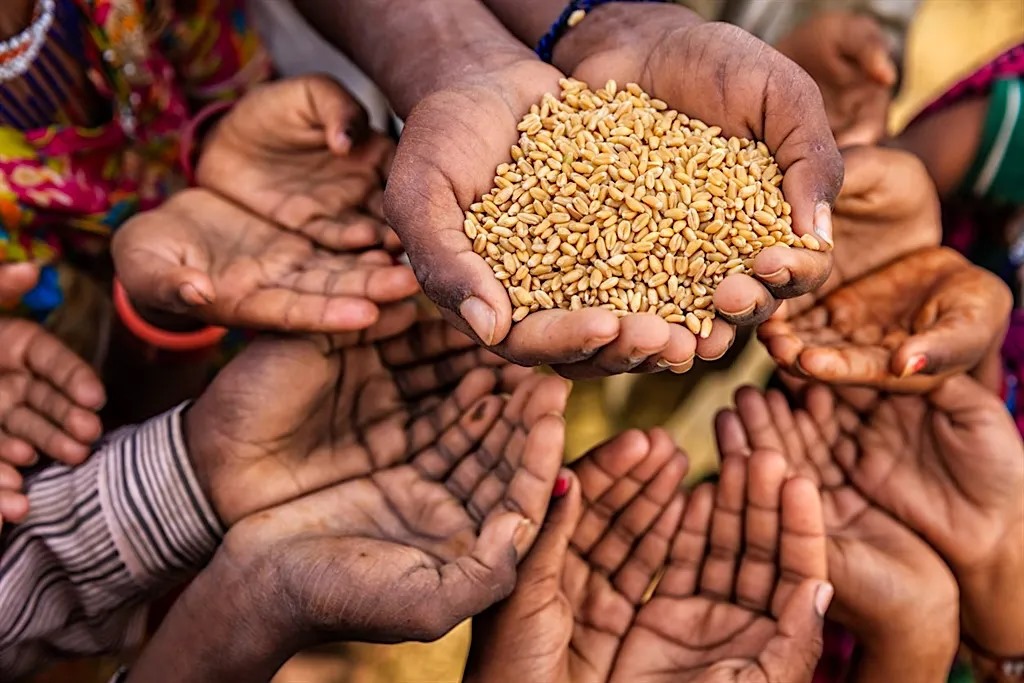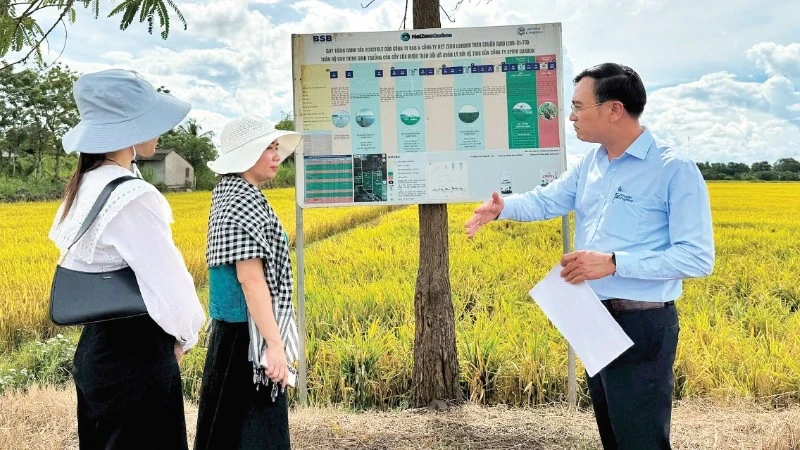Tags
Towards a new model for sustainable rice sufficiency in Africa
By : Gbenga Akinfenwa

Towards a greener future, the Africa Rice Centre (AfricaRice), through its research and field activities, including the AICCRA project in Mali, is developing climate-smart innovations aimed at increasing rice productivity, while significantly reducing the use of plastic in agricultural and post-harvest practices.
This integrated approach, which balances yield and environmental protection, is already being implemented in several countries across the continent.
Through four concrete examples – Organic Mulch; Biochar; Reusable packaging and Solar drying solutions, the model illustrates how AfricaRice is helping to transform rice production through smart, economical and environmentally friendly practices.
While illustrating the organic mulch, considered as a nature-based solution for soil health, the centre noted that plastic mulch is often used to conserve moisture and limit weeds, but can lead to a build-up of harmful microplastics.
“AfricaRice promotes a natural alternative – rice straw mulch. Farmers are encouraged to use crop residues to cover their plots. This method maintains moisture, controls weeds, and enhances soil biodiversity without the use of synthetic materials.
“It improves productivity and soil health, particularly in fragile lowland areas. This practice has increased farmers’ income by five to 15 per cent and soil carbon stocks by 1.0–2.0 tons per hectare (t/ha). ”
AfricaRice revealed that as an alternative to synthetic fertilisers, which are often packaged in plastic, it promotes the use of biochar made from agricultural residues (rice husks, straw, manure) through the AICCRA project.
It added that farmers are trained to produce and apply biochar using local materials, without plastic packaging or external inputs. This practice, it added, improves soil fertility, reduces costs, promotes plastic-free circular agriculture, and increases yields. “Farm incomes have increased by 10 to 20 per cent and greenhouse gas emissions have decreased by 20 to 30 per cent thanks to the use of biochar.”
On the reusable packaging, it explains that the model is making the post-harvest chain eco-friendly. “Single-use plastic bags used after harvest deteriorate quickly and pollute the environment. AfricaRice promotes sustainable alternatives within its community rice processing centers, including the use of woven polypropylene or jute bags.
“These reusable containers preserve the quality of the rice while promoting a circular economy. This transition contributes to the reduction of plastic waste and improves producers’ access to more robust, market-ready packaging. ”
AfricaRice stressed that the traditional drying methods, which rely on thin plastic tarps, are inefficient and environmentally harmful. It added that the centre is replacing them with solar bubble dryers and reusable tarps made from sustainable materials.
“These technologies help preserve grain quality, reduce post-harvest losses, and avoid the use of disposable plastics. Combined with practical training, they improve post-harvest management, reduce losses, and increase farmers’ incomes, while protecting natural ecosystems.
“AfricaRice demonstrates that it is possible to increase rice production and the resilience of agricultural systems while limiting environmental impact. By reducing the use of plastic throughout the value chain—from production to packaging—AfricaRice is proposing a new model for rice production that is environmentally friendly, accessible, and economically viable. The future of rice in Africa is not just about feeding people, but about doing so productively, sustainably, and without plastic pollution. ”
https://guardian.ng/features/agro-care/towards-a-new-model-for-sustainable-rice-sufficiency-in-africa/#google_vignettePublished Date: July 18, 2025






